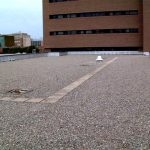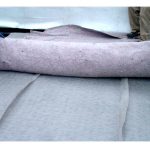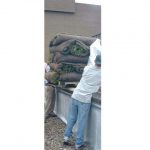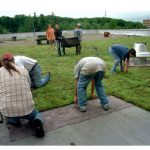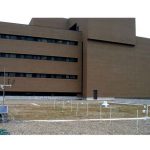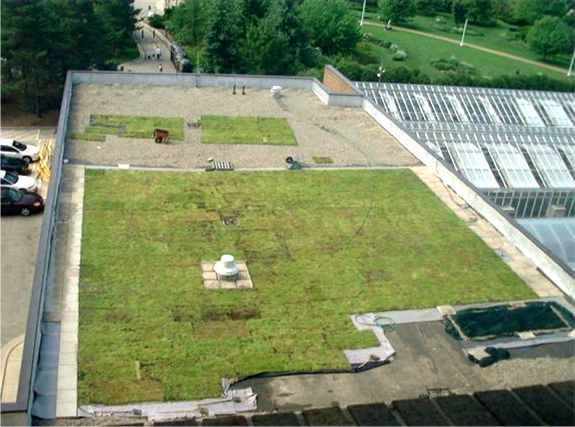
Additional Resources
Visit the Michigan State University Green Roof Research Program website here. The Project Manager and designer is Dr. Brad Rowe: rowed@msu.edu. Newslinks relevant to PSSB installation:Link to a video clip.MSU installs vegetative roof to save energy, environmentLSJ.com, by James McCurtis Jr.May 28, 2004Green roof planted on top of Plant Scienceswww.statenews.com, by Rebecca McNultyMay 24, 2004
Michigan State University can now boast benefits of green roof technology to the local and surrounding community by having its own green roof. Our green roof is the first on campus, and the first in the Michigan?s public university system to establish studies comparing roofing surfaces. The Green Roof Research Program will be implementing additional studies to further monitor green roof performance. The hard work of acquiring financial support paid off when the extensive green roof (3500 sf) was installed May 21, 2004 on the Plant and Soil Sciences Building (PSSB). This roof serves multiple functions. First, its location is excellent for using it as a demonstration roof. While visiting the surrounding gardens, or taking a lunch break, the general public can see the green roof from the 2nd floor viewing room accessible during building hours. The public can observe the annual progression of a green roof throughout the changing seasons. Second, this roof is a learning tool for graduate and undergraduate students. The MSU living roof serves as a hands-on tool for learning about installations, monitoring, and maintenance.Scientifically, instrumentation compares vegetated and existing gravel surfaces. Real-time data will show current weather conditions and rainfall amounts, as well as monitor heat flux (heat transfer in and out of the building), soil moisture, and temperatures at various depths throughout the extensive system, the gravel ballast, and the ambient air. Plant establishment, rate of coverage, and over-wintering successes will also be evaluated for novel green roof plant species. As with many cities, the MSU community is concerned with storm water runoff and energy conservation. Data collected from the MSU PSSB green roof project will be used in decision making for the MSU Campus Master Plan. Hopefully, vegetated roofs will be a feasible option for new and retrofit construction.
No retrofitting was needed because the weight of the entire green roof system supplied by XeroflorAmerica, LLC. was approximately ten pounds per square foot, about the half the weight of the pre-existing gravel ballast. The pre-vegetated mats were grown at an off-site production field. The mats were harvested as rolled 1 X 2 meter sections, stacked on pallets, and transported to the building. On top of the roof, the gravel ballast was removed before the green roof foundation layers were put down. The base layers consisted of a HDPE root barrier membrane, drainage layer, filter fabric, and water retention fleece. The vegetative mats were unrolled onto the layers. Volunteer labor, consisting of students and professors, was completed in about 5 hours.The employees at the Plant and Soil Sciences Building have already noticed changes to the roof and question why it is called “green” as they see varying colors of reds, whites, and yellows. The living roof has ten Sedum species that will adapt with the changing growing season, just as in nature. By late in the summer season, dried flower stalks are visible, with seedlings are emerging in bare spots. Supplemental irrigation is available by utilizing a faucet attached to the building, though periodic rainfall has been adequate to maintain plant health thus far. Green roof materials were donated by XeroflorAmerica, LLC, and additional funding was supported by Michigan State University Office of the Vice President of Finance and Operations. The MSU Green Roof Research Program is an ongoing collaboration between the Departments of Horticulture, Crop and Soils, Plant Biology, Climatology, Mechanical Engineering, and Agricultural Engineering.
 Greenroofs.comConnecting the Planet + Living Architecture
Greenroofs.comConnecting the Planet + Living Architecture
